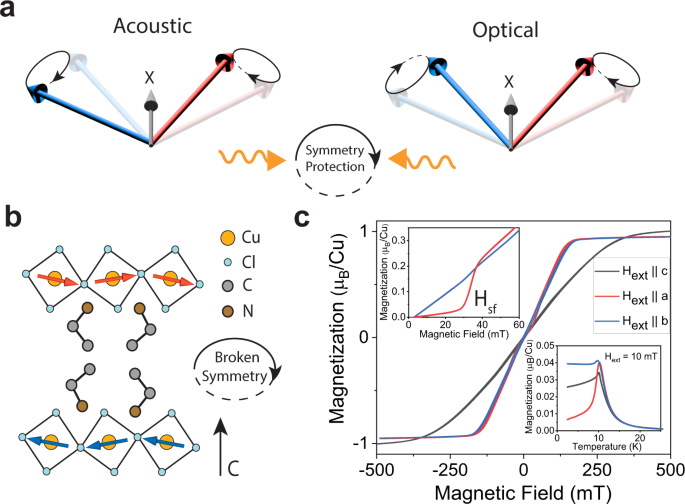2023-04-04 ノースカロライナ州立大学(NCState)
この研究は、ハイブリッドマグノンシステムを作成するために使用できる材料の数を拡大するものである。磁性材料では、光学的なマグノンと音響的なマグノンの2つの種類があり、これらのスピンを混合するためにDMIを利用した。
研究者らは、有機カチオンを材料に加えることで、材料内の対称性を破壊し、異なるマグノンモードを結合し、スピンを混合することができることを発見した。
この研究は、量子物理学についての新しい知見を提供するだけでなく、ハイブリッド有機無機ペロブスカイト材料における対称性の破壊の観察にも成功した。
<関連情報>
- https://news.ncsu.edu/2023/04/dmi-allows-magnon-magnon-coupling-in-hybrid-perovskites/
- https://www.nature.com/articles/s41467-023-37505-w
ハイブリッドペロブスカイト反強磁性体におけるハイブリッドマグノニクス Hybrid magnonics in hybrid perovskite antiferromagnets
Andrew H. Comstock,Chung-Tao Chou,Zhiyu Wang,Tonghui Wang,Ruyi Song,Joseph Sklenar,Aram Amassian,Wei Zhang,Haipeng Lu,Luqiao Liu,Matthew C. Beard & Dali Sun
Nature Communications Published:01 April 2023
DOI:https://doi.org/10.1038/s41467-023-37505-w

Abstract
Hybrid magnonic systems are a newcomer for pursuing coherent information processing owing to their rich quantum engineering functionalities. One prototypical example is hybrid magnonics in antiferromagnets with an easy-plane anisotropy that resembles a quantum-mechanically mixed two-level spin system through the coupling of acoustic and optical magnons. Generally, the coupling between these orthogonal modes is forbidden due to their opposite parity. Here we show that the Dzyaloshinskii–Moriya-Interaction (DMI), a chiral antisymmetric interaction that occurs in magnetic systems with low symmetry, can lift this restriction. We report that layered hybrid perovskite antiferromagnets with an interlayer DMI can lead to a strong intrinsic magnon-magnon coupling strength up to 0.24 GHz, which is four times greater than the dissipation rates of the acoustic/optical modes. Our work shows that the DMI in these hybrid antiferromagnets holds promise for leveraging magnon-magnon coupling by harnessing symmetry breaking in a highly tunable, solution-processable layered magnetic platform.



